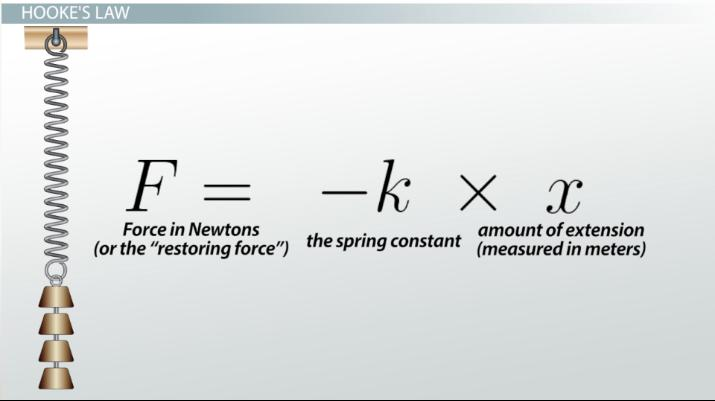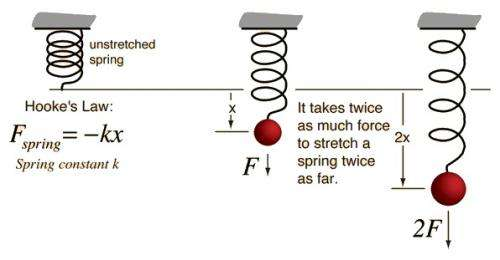Hooke’s law is the law of elasticity which was discovered in 1660 by the English scientist, Robert Hook. This law is compatible with Newton’s law of the static equilibrium. This law states that for the relatively small deformations of the objects, the size of deformation or displacement is directly proportional to the force or load, that is responsible for causing this deformation. Upon the removal of forces or load, the object is returned to the original size and shape. By using Hooke’s law, the elastic behavior of the solids can be explained by the facts of the small displacements of the atoms, ions, and molecules which are constituent of these solids. The displacement from their normal position is directly proportional to the applied force.

Mathematical Explanation of Hooke’s Law
In the mathematic terms, Hooke’s law states that the applied force is equal to the constant K times of the change in length or displacement. The value of the constant is dependent on the kind of elastic material, its shape, and dimensions. The deforming forces can be applied to the solids by compressing, stretching, bending, twisting, and squeezing. So, according to Hooke’s law, the elastic behavior is exhibited by the metal wire as there is a small increase in its length when there is stretching due to the applied forces.

Hooke’s Law is Related to Elasticity
When the value of applied force is large, the deformation of the elastic material is larger than expected based on the Hooke’s law, even though the elasticity of the materials is maintained and original size and shape are maintained after removing of the forces. This law is the first example of the explanation of the elasticity which is an important property of the material or object which causes the restoration of the original shape after the distortion. After experiencing the distortion, the ability to return to the normal shape is referred to as the restoring force.
Applications of Hook’s Law
Hooke’s law is used for governing the behavior of the springs and is also applied for studying the properties in the various situations where there is the deformation of the elastic body. This law can be applied to the various things including the pulling on the rubber band, and inflating a balloon, the measurement of the amounts of the force of the wind which is required to make the tall building bend and sway. This law has many practical applications, for creating the balance wheel, which makes possible the creation of the mechanical wheel, spring scale, manometer, and portable timepiece.
